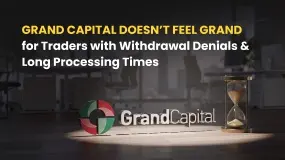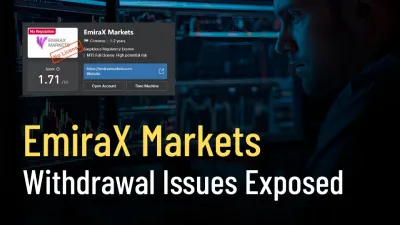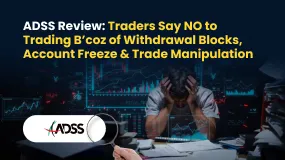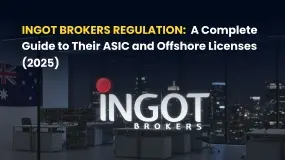简体中文
繁體中文
English
Pусский
日本語
ภาษาไทย
Tiếng Việt
Bahasa Indonesia
Español
हिन्दी
Filippiiniläinen
Français
Deutsch
Português
Türkçe
한국어
العربية
Reduce Your Trading Costs for More Profits | Compare & Survey with WikiFX Now
Abstract:Van K. Tharp, author of "Trade Your Way to Financial Freedom" states that transaction costs are one of the most important factors that greatly affect one’s trading performance. He emphasizes that if you cannot lower your cost to trade, it will be hard for a trading system to be profitable in the long run. Many traders tend to overlook the importance of transaction costs or do not take them into account at all when opening a forex trading account, that is the spread offered by forex brokers.

If you have a system that can generate $10,000 in profits in 1 year, then you are probably paying more than $10,000 in transaction costs. Assuming you can somehow save $3,000 in transaction costs, this is equivalent to a 30% increase in your profitability – now you see how impactful such invisible costs are to your trading results?
The spread is the difference between the selling price and the buy price. Simply put, suppose a retailer buys a product at wholesale and then sells it at a higher price. Some brokers adjust the spread between the ask and bid prices based on volatility, which means that if the market is volatile, the spread will be different each time you trade during this period.
What are the factors that affect spreads?
While fixed spreads do not change, spreads vary between instruments. Variable spreads can indicate the liquidity of the market.
This is due to specific factors such as the supply and demand for a particular security, the overall trading activity of the underlying asset, etc.

In forex trading, there are two types of spreads: variable spreads and fixed spreads.
Variable spreads or floating spreads are the constantly changing values between the ask and bid prices. In other words, the spreads you pay to buy a currency pair fluctuate due to things like supply and demand and overall trading activity.
On the other hand, fixed spreads allow you to know the cost of the spread in advance and simply work out your strategy (long-term or daily strategy). This allows for greater price transparency and, ultimately, a more accurate cost assessment before starting to trade.
Brokers that promise narrower spreads usually offer variable spreads. While the actual spreads you pay may not be what the broker advertises, this is not always the case. In general, active trading sessions are the most liquid and spreads are usually narrower. A typical example of this situation is the London-New York overlapping session.
To find a broker that is not only reliable but also offers a low spread, may be time-consuming and tricky as well. WikiFX is here to help you kill two birds with one stone.

WikiFX is an established global forex broker regulatory query platform. Available on both web (www.wikifx.com) and mobile app (free download from Google Play/App Store), WikiFX stores forex broker-related verified information.
In conjunction with the importance of comparing spreads offered by forex brokers, this article aims to highlight the usefulness of the WikiFX comparison tool – so you can compare across several forex brokers at ease, without having to go back and forth between their individual websites.

This is a straight-forward step that can be done with just a few clicks at WikiFXs Broker Comparison page: https://compare.wikifx.com/en/compare/.

Simply add in the names that you would like to compare across the table.



Two examples can be used to illustrate how can spreads impact ones trading results:
Suppose a trader trades 20 days a month and makes $50 a day, this $50 is gained through 5 trades, i.e., $10 profit each time. So how much does it cost to make $1,000 in 20 days of trading?
I. Assuming that each of these transactions is 0.1 lots, the average spread is 2 pips, that is, the cost of each trade is $4 (buy $2; close $2), totaling $20 a day in transaction cost. That will be $400 in transaction cost per month.
II. Suppose the average spread now is 1.5 pips, how much does the transaction cost become in a month? Each transaction of 0.1 lots, costs $3 (buy $1.5; close $1.5), totalling $15 a day in transaction cost. That will be $300 in transaction cost per month.
The average spread is reduced by 0.5 points, saving $100 ($400-$300) per month in transaction costs. Therefore, in the same situation, choose the trading platform with lower spreads as much as possible.

Disclaimer:
The views in this article only represent the author's personal views, and do not constitute investment advice on this platform. This platform does not guarantee the accuracy, completeness and timeliness of the information in the article, and will not be liable for any loss caused by the use of or reliance on the information in the article.
Related broker
Read more

Grand Capital Doesn’t Feel GRAND for Traders with Withdrawal Denials & Long Processing Times
The trading environment does not seem that rosy for traders at Grand Capital, a Seychelles-based forex broker. Traders’ requests for withdrawals are alleged to be in the review process for months, making them frustrated and helpless. Despite meeting the guidelines, traders find it hard to withdraw funds, as suggested by their complaints online. What’s also troubling traders are long processing times concerning Grand Capital withdrawals. In this Grand Capital review segment, we have shared some complaints for you to look at. Read on!

EmiraX Markets Withdrawal Issues Exposed
EmiraX Markets Review reveals unregulated status, fake license claims, and withdrawal issues. Stay safe and avoid this broker.

ADSS Review: Traders Say NO to Trading B’coz of Withdrawal Blocks, Account Freeze & Trade Issues
Does ADSS give you plenty of excuses to deny you access to withdrawals? Is your withdrawal request pending for months or years? Do you witness account freezes from the United Arab Emirates-based forex broker? Do you struggle to open and close your forex positions on the ADSS app? Does the customer support service fail to respond to your trading queries? All these issues have become a rage online. In this ADSS Broker review article, we have highlighted actual trader wordings on these issues. Keep reading!

INGOT Brokers Regulation 2025: ASIC vs Offshore License - What Traders Must Know
Explore INGOT Brokers regulation in 2025: Compare their ASIC and Seychelles FSA licenses, understand trader protection levels, and learn about potential risks in this detailed guide.
WikiFX Broker
Latest News
Consob Targets Political Deepfake “Clone Sites” and Unlicensed Platforms in Latest Enforcement Round
WikiEXPO Global Expert Interviews: Gustavo Antonio Montero: ESG in Finance
2 Malaysians Arrested in $1 Million Gold Scam Impersonating Singapore Officials
Is FXPesa Regulated? Real User Reviews & Regulation Check
Fraud Mastermind Zhimin Qian Sentenced to 11 Years for $6.6 Billion Bitcoin Ponzi Scheme
Almahfaza Broker – 2025 Review: Safe or Scam?
Uniglobe Markets Review 2025: A Complete Guide to an Unregulated Broker
INZO Broker No Deposit Bonus: A 2025 Deep Dive into Its Offers and Risks
Exness Broker Expands in South Africa with Cape Town Hub
Global Guide to Finding Forex IBs/Brokers — Share Your Pick and Win Big!
Currency Calculator



